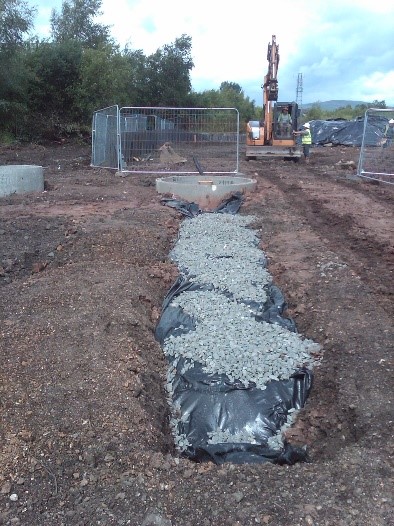
Permeable Reactive Barrier
Geoenvironmental Applications were asked to develop a strategy for remediating highly contaminated groundwater in a site 200m away from the River Clyde. The contamination had migrated from the adjacent gasworks and was sitting in shallow perched groundwater in the made ground on the site. The risk assessment identified the contamination to be a risk to the River Clyde and to the future residents of the site.
We worked with the developer and regulatory bodies to develop a strategy that would remediate the contamination and fit in with the constraints of the development. As the site was at risk of flooding, the ground level needed raising and so we proposed the construction of a sheet pile wall around the downstream side of the site with a single gate permeable reactive barrier (PRB). The sheet pile wall extended below the made ground and prevented the contaminated groundwater migrating off site, whilst funnelling it towards the PRB. The sheet pile wall also acted as a retaining wall for the 2m of fill, which had the combined purpose of protecting the residents from the contamination, reducing the risk of flooding and helping consolidate the made ground so that the groundwater was pushed towards the PRB.
Modelling showed that only one gate of reactive medium was required and this could be located in an area of soft landscaping so that development could continue around it. A reactive medium was chosen which would extract all the contaminants of concern from the water as it flowed through the barrier. Sampling points were placed on both the upstream and downstream side of the barrier, so that the concentration of the contaminant in the groundwater could be monitored and the reactive medium changed as it became exhausted.
This method had many advantages for the developer, as it allowed the development of the site to continue whilst the groundwater was being cleaned up. It was particularly cost effective as the retaining sheet pile wall could be used as the barrier to ground water migration. We monitored the water monthly and this showed that within two years, contaminant concentration had reduced enough to enable us to agree with the local authorities and SEPA that monitoring could stop and the barrier decommissioned.
